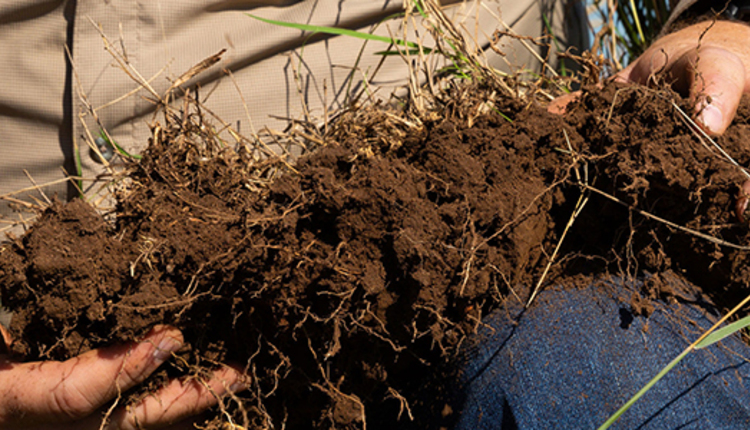The root of the soil organic matter: Part 1 |
| By C.J. Weddle |
|
|
 Noble Research Institute Soil health is a complex concept. In the realm of regenerative agriculture, soil carbon is believed to be one of the most important measures of restoring soil health. Noble Research Institute’s Larry York and Jeff Goodwin recently explained in the Noble News and Notes newsletter the steps you can take to improve a soil’s carbon content and overall health. Without using soil samples and lab tests, carbon content can be observed by the look and smell of a soil. Soils with high carbon content tend to be darkly colored and have a rich, earthy scent. Some of the benefits of an improved carbon content include greater water filtration and enhanced water retention. Before you can build soil health, you need to understand the basics of carbon cycling. Roots take up water and minerals from the soil around them. In turn, they release many different compounds known as root exudates that range from mucilage to small molecules like sugars. This continual exchange fuels the soil’s microbial community. There are two types of carbon content present in the soil. One is particulate organic matter, which is made of larger fragments and is believed to be shorter lived. Mineral-associated organic matter, the second type, is made of smaller molecules bound to soil mineral particles. So, how can we build soil health and soil carbon content? York and Goodwin suggest the following as good starting points:
The Noble Research Institute defines regenerative agriculture as the process of restoring degraded soils using practices based on ecological principles. Soil health has become a rallying point for many people involved with regenerative agriculture, including researchers, food companies, and producers.  C.J. Weddle C.J. Weddle served as the 2020 Hay & Forage Grower editorial intern. She currently attends Mississippi State University, majoring in agricultural education, leadership, and communications. She grew up on a farm in Vardaman, Miss., where her family raises sweet potatoes and soybeans. |
